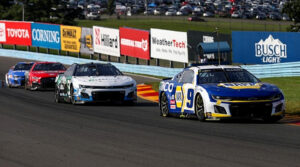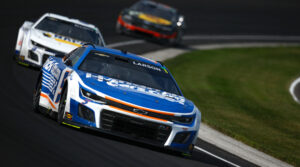Australian Supercar Drivers in NASCAR: A New Era

The motorsports world is witnessing an interesting trend: Australian supercar drivers are increasingly setting their sights on the NASCAR Cup Series. This movement not only represents a significant shift for the drivers themselves but also has profound implications for NASCAR drivers and the sport as a whole.
The Allure of NASCAR for Australian Drivers
For Australian drivers, NASCAR presents a new frontier, vastly different from what they are used to. The oval tracks, the high-octane racing environment, and the larger number of races offer a fresh set of challenges and opportunities.
Pros for Australian Drivers:
- Global Exposure: NASCAR’s international popularity provides a platform for these drivers to gain broader recognition.
- Diverse Racing Experience: The variety of tracks in NASCAR, including ovals and road courses, offers a comprehensive racing experience.
- Sponsorship and Branding Opportunities: The vast NASCAR audience can lead to more lucrative sponsorship deals and personal branding opportunities.
Cons for Australian Drivers:
- Adaptation to Racing Style: The transition from circuit racing to oval tracks can be steep and challenging.
- Highly Competitive Field: NASCAR’s competitive environment may pose a tough entry barrier.
- Cultural Adjustment: Relocating from Australia to the U.S. requires significant lifestyle and cultural adjustments.
Impact on NASCAR Drivers
Pros:
- Enhanced Competition: The entry of skilled Australian drivers can raise the overall standard of racing.
- Exposure to Diverse Tactics: Learning from drivers with different backgrounds can enrich NASCAR drivers’ strategic approaches.
- Networking Opportunities: Interactions with international drivers could open new doors for NASCAR drivers in global racing circuits.
Cons:
- Tighter Competition for Seats: More drivers in the fray means stiffer competition for existing NASCAR drivers.
- Resource Distribution: Teams might reallocate resources to support the integration of international drivers.
- Communication Challenges: Differences in communication and cultural backgrounds may initially disrupt team dynamics.
Broader Implications for NASCAR
Pros:
- Increased Global Appeal: International drivers can draw more global viewers to NASCAR.
- Potential for Cross-Promotion: Collaborative events with Australian Supercars could further elevate NASCAR’s profile.
- Innovative Racing Dynamics: The infusion of diverse skills and tactics can lead to new racing strategies.
Cons:
- Integration Hurdles: Blending different racing cultures into the NASCAR milieu might be challenging.
- Identity Balance: Maintaining NASCAR’s core identity while embracing international elements is crucial.
- Fanbase Reaction: Traditional fans might have mixed responses to the changing dynamics of the sport.
Conclusion
The trend of Australian supercar drivers transitioning to NASCAR marks a pivotal moment in motorsports. It opens avenues for growth, skill enhancement, and global reach for the drivers, while also presenting NASCAR with opportunities for increased competition, innovation, and global appeal. However, the challenges are significant. How these factors are managed will crucially shape the future trajectory of NASCAR and potentially influence the broader landscape of international motorsports.




